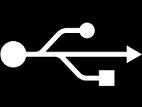Vbus Droop
USB 2.0 Specification, Section 7.2.4.1
USB 3.0 Specification, Section 11.4.4.1
This test is only applicable if the hub or host have more than one downstream port.For this test all ports are loaded according to the table above from the drop test except one port is loaded with a dynamic load. This dynamic load switch every second a load on and off while we observe the Vbus droop effect on the other ports. Usually the port most near to the dynamic load has the most effect but this is not always so. The droop effect may no exceed 330mV. The dynamic load is 100mA for USB 2.0 and 150mA for USB 3.0.
With this measurement the
capacitor ESR, cables, fixtures have a big impact on the result. Some
of these effects will be posted soon.
For USB-IF Logo Compliance there is only one fixture valid and can be
purchased via the USB-IF
eStore
It's an easy fix to reduce the droop effect by using a larger capacitor over Vbus and GND. According to the USB 2.0 spec at least 120µF with low ESR should be placed over Vbus and GND on a downstream port.
Keep the following item in mind for drop and droop testing:- Stress the hub or host in it's worst case power consumption.
- During testing use the power supply that is used in the market and when changing the power supply re-test drop droop
- Many devices on the market take more current then allowed so it's advisable to take more margin and there test with higher static and dynamic loads
- Many self powered hubs also operate in bus-powered mode but not claim this via their descriptor it's not possible for these hubs to pass the drop droop test.
More info:
